If you’re looking for the latest esports tournament updates 2025, you’re my kind of person. I’ve been glued to brackets and patch notes since before “LAN pajamas” were a thing. In my experience, the vibe this year is speed and chaos. Faster schedules. Sneaky roster shuffles. Swiss stages everywhere. Prize pools moving around like a Twitch chat during a pentakill.
I’m tracking the latest esports tournament updates 2025, tournament schedules, match results, and all the meta changes across CS2, Dota 2, League of Legends, VALORANT, Rocket League, and the mobile scene (PUBG Mobile, Free Fire, you name it). Simply put: teams are grinding, organizers are tinkering, and we still pretend group stage tiebreakers make sense.
What actually changed this year (and what’s just louder)
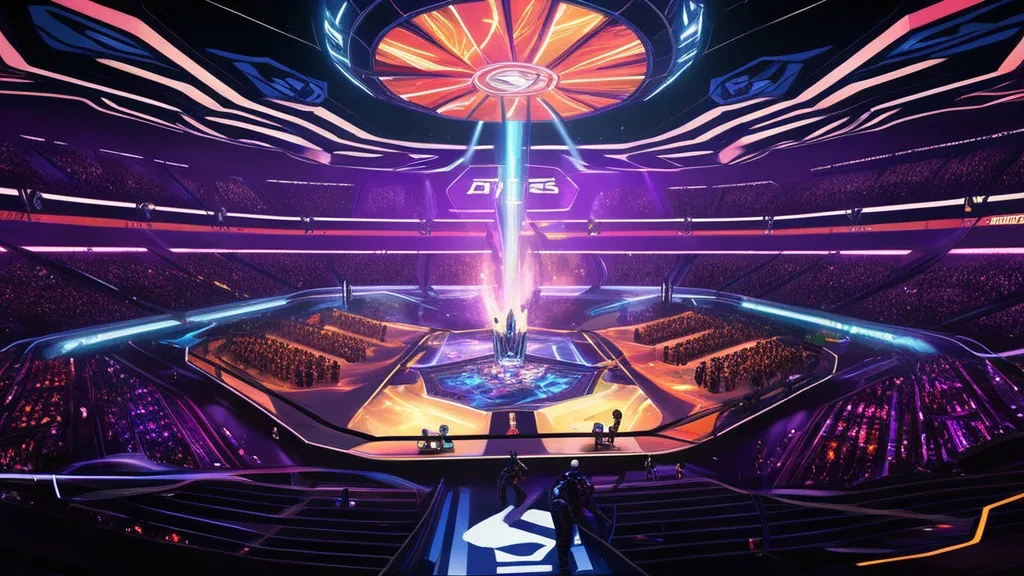
Every season claims to be “the big one.” Most aren’t. This one feels different in some small but real ways. I’ve always found that little tweaks matter more than banner headlines.
- Formats: More Swiss. More double-elimination in playoffs. Fewer dead games. I like it. Less coinflip, more story.
- Schedules: Shorter gaps between splits, Majors, and Masters. Viewers love it. Players look like zombies, but with better keyboards.
- Broadcasts: Co-streaming continues to win. Official streams handle the serious stuff; co-streamers handle the chaos.
- Regions: MENA and South Asia keep getting bigger events. Brazil, Korea, and China still terrify everyone on LAN.
- Travel: Less ping drama than last year. Not zero. Just less.
Formats: the tiny changes that fix big headaches
Swiss stages aren’t new, but the execution is better. I’ve noticed smarter seeding and clearer rules about who meets who. It’s not perfect. But it beats bloated group stages with three-way ties that send everyone into spreadsheets. Also, more tournaments are sticking with double-elimination playoffs. If you want the latest esports tournament updates 2025, following these changes helps you stay ahead of the curve. If you’ve ever watched a team go 3–0 in groups and then instantly bomb out in a single-elim quarterfinal, you know why.
Qualifiers got a tiny glow up too. Longer open qualifiers, tighter closed qualifiers, and better regional balance. What I think is, it makes Cinderella runs possible without turning the bracket into confetti.
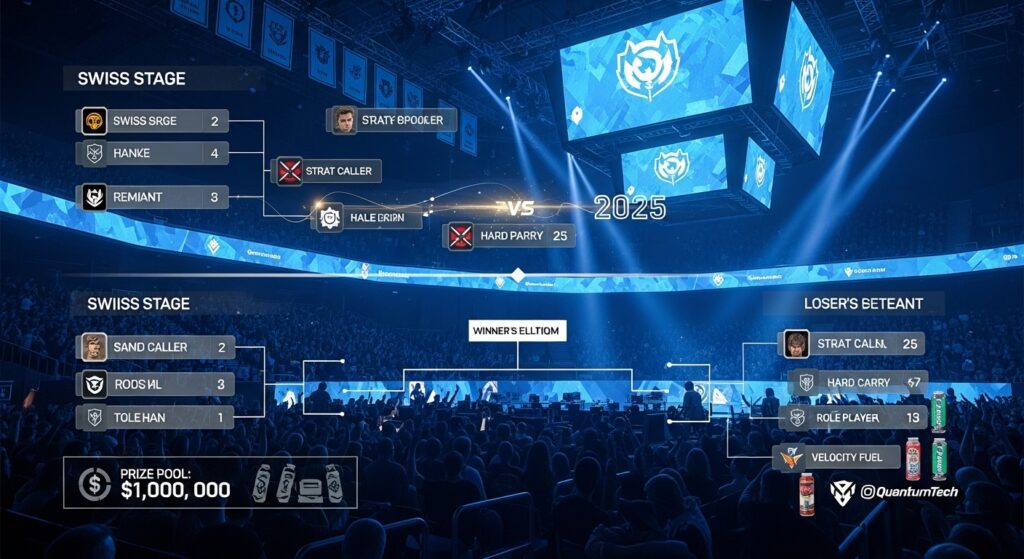
Prize pools and sponsors: less loud flex, smarter money
I won’t sugarcoat it. Some prize pools got trimmed. Some got a boost. Most held steady. The real story is incentives. More events now pay out match wins in groups. You fight for seeding. You fight for cash. It adds stakes to what used to feel like scrims with better lighting. For anyone tracking the latest esports tournament updates 2025, these changes in prize distribution are key to understanding the evolving scene. Sponsors look smarter too—less random crypto rain, more hardware, energy, and telcos. Feels grown-up. Scary.
Roster moves: super teams come and go, role players win trophies
In my experience, the teams that win in 2025 have two things: a flexible strat caller and one player who can hard-carry when things break. You still need solid role players. You still need a coach who knows when to time out and say, “Stop. Breathe.” For those following the latest esports tournament updates 2025, noticing these team dynamics is key. Imports matter, but not like they used to.
Ping walls, culture fit, and commute-to-LAN time matter more. For anyone following the latest esports tournament updates 2025, these behind-the-scenes factors are just as critical as raw skill. That’s the part no one writes in bold.
Game-by-game: quick hits you can actually use
I’ll keep it simple. You don’t need a 30-page dissertation to follow the scene. Here’s what I’m watching week to week on the esports calendar and why.
Counter-Strike 2 (CS2)
- Majors and top-tier events are leaning into strong seeding and deep playoff brackets. Best-of-3 early, best-of-5 in the grand final. About time.
- Utility usage is the meta. Nades and team spacing win games more than raw aim alone. Yes, even for your favorite entry.
- NA has sparks, EU still the boss level. CIS aim schools continue to produce new monsters like it’s a factory line.
Dota 2
- Open circuit energy feels alive. Qualifiers are spicy. Stacks form, dissolve, reform—sometimes in 48 hours.
- The International remains the gravity well. Everyone orbits it, no matter how loudly they say “We’re focused on the next series.”
- Patch-to-patch swings still define the year. I love it. Keeps drafts weird and casters honest.
League of Legends
- MSI sets the tone. Worlds does the grading. Nothing new there, but the Swiss style and seeding rules make Worlds groups way less cursed.
- Early game tempo is king again. If your team can’t track objectives and fight resets, good night.
- LPL and LCK remain terrifying. Western teams get chances, but the margin for error is tiny.
VALORANT
- International leagues, Challengers, and Ascension keep the pipeline open. It’s the healthiest part of the scene.
- Masters and Champions are the anchor events. Watch how map pools get curated. Small tweaks. Huge impact.
- Role compression is real. Your “flex” player is secretly the MVP.
Rocket League
- LANs still slap. Momentum matters more than almost any other esport here.
- Rotations and boost control separate the good from the grand finals-level great.
- Viewers show up for clean production and instant highlights. It’s easy to watch. That’s a rare gift.
Mobile esports (PUBG Mobile, Free Fire, and friends)
- Stadiums are full. The energy is no joke. Don’t underestimate it.
- Regional strength in South Asia, Brazil, and MENA keeps rising. The talent is young and hungry.
- Events blend festival vibes with serious brackets. It works.
LAN vs. online: we’re back outside, mostly
LAN finals are where reputations are made or smashed. You can’t hide on stage. You can’t count on your “perfect home setup.” And for what it’s worth, I’ve seen scrim gods turn into pumpkins under arena lights. For those tracking the latest esports tournament updates 2025, LAN finals are always a highlight to watch. That sound from the crowd—the roar when a clutch happens—changes people. It’s good for the scene. It’s good for fans. And it keeps players humble, or at least quiet for a few minutes.
Travel and visas
We still hit the usual issues: visas, last-minute stand-ins, and teams that arrive two days before a final because airlines think gamers are luggage with Wi-Fi. For those following the latest esports tournament updates 2025, these logistical hurdles are just as important as the matches themselves. My advice for teams (not that they asked): arrive early, scrim on local time, and bring a sports psych. I promise it matters more than your 13th dry run of pistol rounds.
Broadcasts and co-streams: the two-lane highway
Official broadcasts are cleaner. More replays. Better analysis tools. Co-streams are louder. Fun, messy, immediate. For anyone tracking the latest esports tournament updates 2025, co-streams are often where new fans land first. They stay for storylines and banter, then click over to the main stream when things get tight. I do the same. I like chaos until map three, round 26. Then I want the premium camera angles and calm voices.
Viewership and platforms
- Twitch is still home base. YouTube Gaming gets key rights and delivers slightly better VODs.
- TikTok clips do the discovery work. Your aunt now knows what an ace is.
- Co-streamers drive casual reach. Desk analysts drive depth. We need both.
My quick 2025 cheat sheet (don’t quote me in a press release)
Here’s a simple snapshot of how I plan around the year. Not every event. Just the beats I keep in my head so I don’t miss the important stuff.
| Quarter | What I Watch For | Why It Matters |
|---|---|---|
| Q1 | Season openers, first Majors/Masters qualifiers | Meta check, new rosters, early power rankings |
| Q2 | Mid-season LANs, MSI/Masters-level events | Seeds for year-end, cross-region data |
| Q3 | Regional playoffs, last-chance qualifiers | Pressure games, bracket chaos, clutch factor |
| Q4 | Worlds/Champions/TI-level finals | Legacies, viewership peaks, patch shaping |
Prize pools: a quick look at the money talk
People obsess over prize money, and, sure, it’s the headline. But salaries, stickers, revenue shares, and travel support matter too. For those following the latest esports tournament updates 2025, understanding how smart orgs budget for long seasons—not single spikes—is key.
| Esport | Prize Pool Trend | Notes |
|---|---|---|
| CS2 | Stable to slightly up | Big events focus on consistency over stunts |
| Dota 2 | Variable | Crowd energy, patch swings, and prestige carry weight |
| LoL | Stable | Franchised structure, long-term sustainability |
| VALORANT | Growing | Strong pipeline via Challengers/Ascension |
| Rocket League | Stable | LAN excellence and sponsor-friendly format |
| Mobile | Up in key regions | Huge crowds in South Asia, Brazil, MENA |
Where I check things fast
When friends ask me, “How do you keep up without losing your mind?” I say: systems. I keep a running feed here under my esports news notes. It’s quick, no fluff, and I update between scrim blocks and coffee. I also peek at big trackers like the community-maintained overview for 2025 in esports when I need a broad look, plus mainstream roundups from BBC esports coverage when I want a non-nerd take that my family can follow without a glossary.
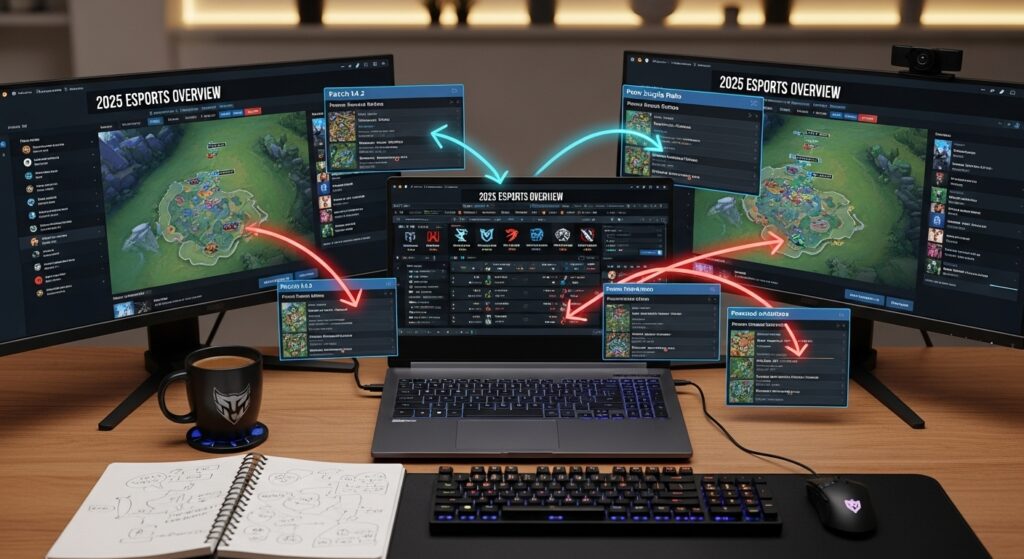
Meta shifts: patch notes and maps are the real puppet masters
It’s not just players getting better. Patches move the floor. Map pools change the ceiling. If a new map lands right before qualifiers, chaos follows. That’s not a complaint. It’s spice. In my experience, the best teams don’t have the most strats.
They have the fastest feedback loops. Review, iterate, try again. For anyone tracking the latest esports tournament updates 2025, keeping up with patch notes and meta shifts is crucial. That goes for LoL draft theory, CS2 utility sets, VALORANT comp swaps—everything. If your squad can’t swap a plan after five rounds, they’re done.
Practice culture: this is where wins are built
- Shorter scrims, tighter focus. No one has time for eight hours of empty maps.
- Sports performance staff matter. Sleep, food, mental reset. Not hype posters.
- VOD review with intent. Not just watching and nodding. Ask why. Fix one thing at a time.
Production, storylines, and the stuff that keeps me watching
I care about brackets. I care more about stories. The rookie getting his first stage win. The veteran who finally stops over-peeking. The coach who burns a timeout and calls the perfect set piece. For those following the latest esports tournament updates 2025, these moments are what stick with fans. And yes, I still roll my eyes at some skits on broadcasts. But the desk analysts are dialed in, the replays are clearer, and the pacing is way tighter than a few years back. We’re learning.
Regional spice I love this year
- Brazilian crowds carrying entire arenas with songs.
- Korean discipline turning close games into slow checkmates.
- NA boom-or-bust energy that makes every series a coin flip with fireworks.
- EU macro games that feel like chess until someone blunders a Baron.
- MENA and India showing up with fearless aim and zero stage fright.
How to actually follow tournaments without needing five screens
People think you need to watch everything. You don’t. In my experience, you pick the top two games you love, keep a casual eye on the rest, and use highlight VODs for the rest. For anyone tracking the latest esports tournament updates 2025, co-streamers make it easier to stay informed. Also: set alerts for semis and finals. Early rounds can be fun, but your time is finite and the grand final is where the legends happen.
My simple playbook
- Check schedule on Monday. Circle two must-watch series.
- Skim patch notes on Wednesday. Look for big nerfs and map changes.
- Watch co-streams for early rounds. Swap to main broadcast for deciders.
- VOD the rest. Skip dead time. Save your brain.
Little things that don’t make headlines but change results
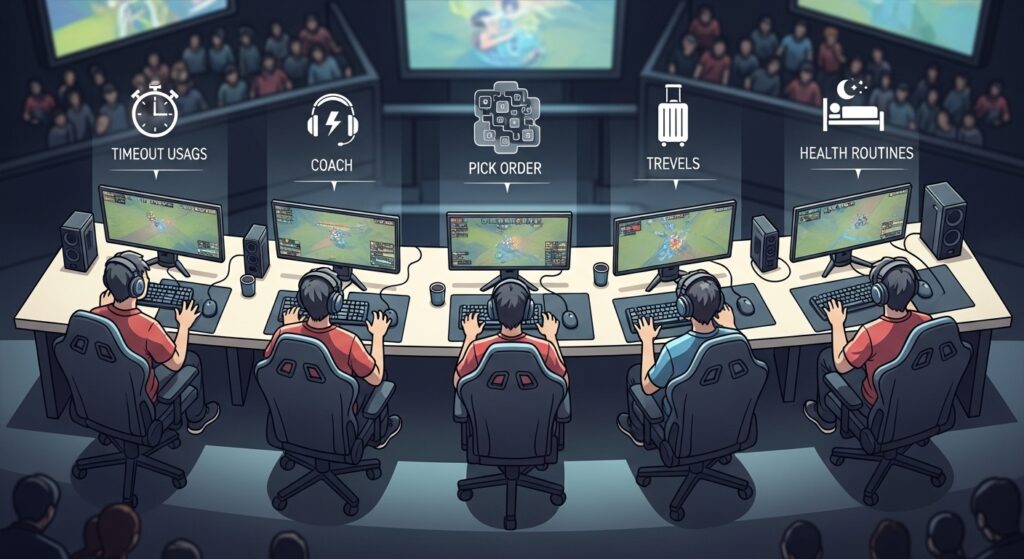
- Timeout usage: Teams are getting smarter. One laser-focused pause can save a map.
- Coach communication: Clear calls, fewer words. Players listen under stress if the message is short.
- Map pick order: Still underrated. Getting your comfort map as decider is night-and-day.
- Travel routines: Teams with consistent pre-LAN routines look alive on day one.
- Health: People laugh until the finals hit. Sleep wins games.
The “latest esports tournament updates 2025” vibe check
I said it once already, but yeah, the scene moves fast this year. The latest esports tournament updates 2025 are less about one giant shock and more about a dozen smart improvements. Better formats. Better pacing. Better storytelling.
I’m not pretending everything’s perfect—some brackets still feel stitched together with duct tape—but I’m seeing progress where it counts: fairer competition, tighter broadcasts, and more places for new talent to climb. Following these latest esports tournament updates 2025 closely is the best way to stay ahead in the scene.
Predictions I’ll regret later (but here we go)
- At least one underdog makes a deep LAN run off the back of a late patch and perfect prep.
- One big favorite gets exposed by a meta shift they ignored.
- Co-stream viewership eclipses main streams for more than one semifinal. Brands adjust fast.
- Mobile esports packs another stadium and forces everyone else to pay attention.
- At least one event nails a hybrid Swiss + double-elim flow that other organizers copy next season.
Random notes from my notebook
- Analyst desks do their best work when they disagree. Friendly fights are good TV.
- Production value is nice. Camera work that catches reactions is better.
- Fans are learning formats fast. The community explains Swiss to newcomers better than any graphic ever did.
- Players are more open on socials. Less PR filler, more real talk. Keep it going.
Stuff I’m personally hyped to watch
- Clutch rounds on map three with the economy broken and nerves screaming.
- Drafts where a comfort pick ruins a “perfect” meta comp. Chef’s kiss.
- Desk segments where a coach explains why a simple timing call changed everything.
- Viewers popping off at home because a co-streamer loses their mind at the exact right moment.
If you’re new: how to start without drowning
Pick one esport. Learn the basic rules, the map names, and what a “power spike” means in that game. Watch highlights for a week. Then pick one live series and focus.
No second screen, no chat. Just the game. You’ll get it. And when you want to go deeper, hit the forums and Discords. Ask dumb questions. We all did. I still do, and I get paid to do this. For anyone tracking the latest esports tournament updates 2025, this focused approach helps you understand the context behind the matches and strategies.
The bit about being honest
People ask me why I’m still obsessed after a decade. Because live competition never feels the same twice. Because a patch can flip a dynasty. Because a rookie can stare down a champion and not blink. I don’t care how many buzzwords get thrown around. Following the latest esports tournament updates 2025 shows you why the game is still the game. And when it’s good, you feel it in your chest like a bass drop.
Two more quick resources
If you want a big-picture look beyond my daily notes, take a spin through the community-curated 2025 esports timeline. For mainstream checks and the odd interview your parents might actually read, I skim BBC’s esports page every few days. Between those and my own esports news archive, you’ll be fine. Mostly. The scene moves fast. That’s part of the fun.
One last sip of coffee, then back to the VODs
If you skimmed all this and just want the headline: watch for refined formats, smart seeding, and more mid-season shakeups than you expect. The latest esports tournament updates 2025 aren’t flashy slogans—they’re small fixes stacking up into better shows and better games. That’s what I’m here for, anyway. Following these latest esports tournament updates 2025 closely is the best way to stay on top of the scene.
FAQs
- Is there a simple place to check schedules and results? I keep my own notes and links under my esports news page. For a wider view, try the community trackers and official event pages. Set alerts for semis and finals to save time.
- Do I have to understand Swiss format to enjoy events? No. Watch the matches. The broadcast will tell you who’s close to qualifying or elimination. You’ll pick it up by the second round.
- What’s the best way to follow multiple games? Pick two to watch live, and VOD the rest. Use co-streams for early rounds and switch to the main channel for deciders. Works for me.
- Are prize pools going up or down? Depends on the game. Some steady, some rising, some variable. The bigger story is better structure and payouts tied to wins, not just final placements.
- How important are patches before tournaments? Huge. A small change can flip a map pool or a draft strategy. The best teams adapt fast. Everyone else complains on Twitter.
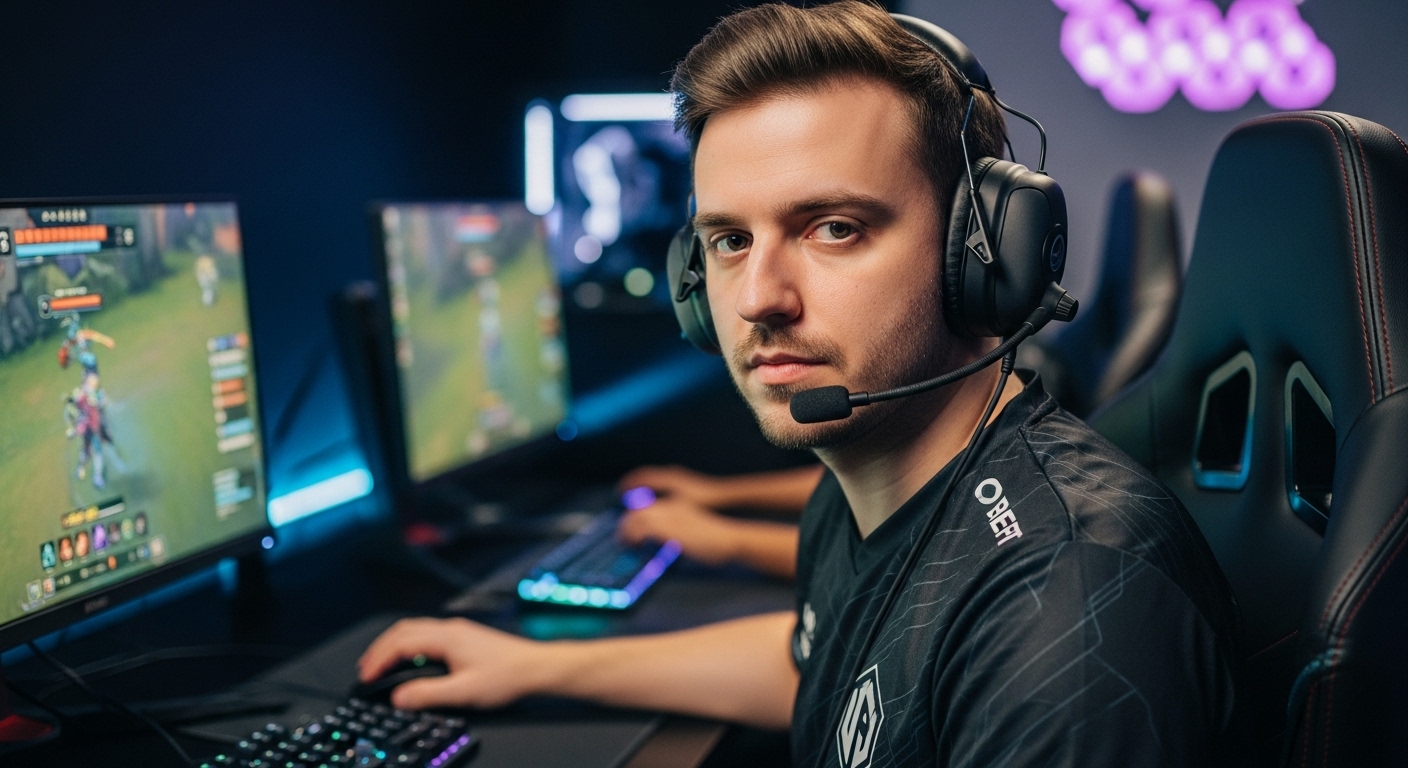
John | Your source for Esports, Battle Royale, Role-Playing, Retro Games, and Gaming Gear. Let’s Enjoy!

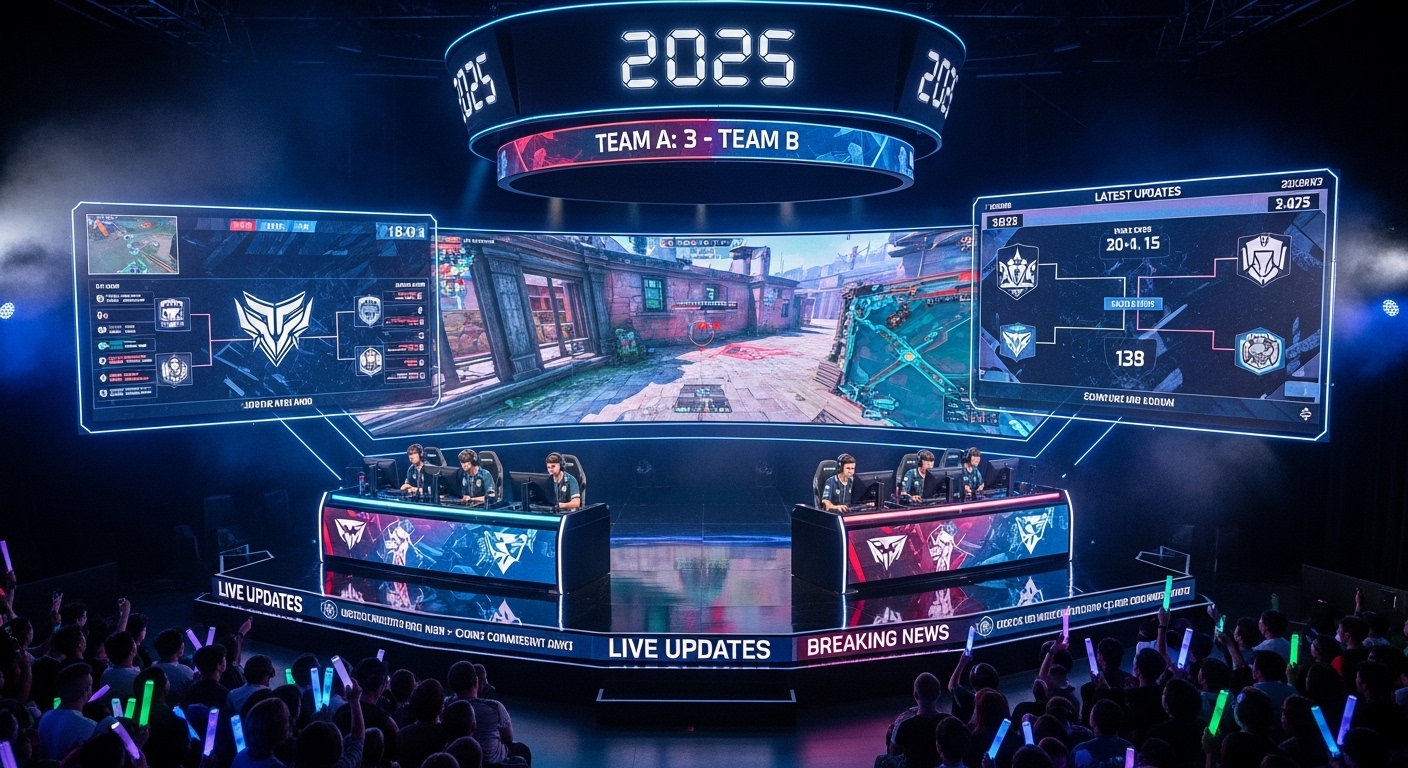
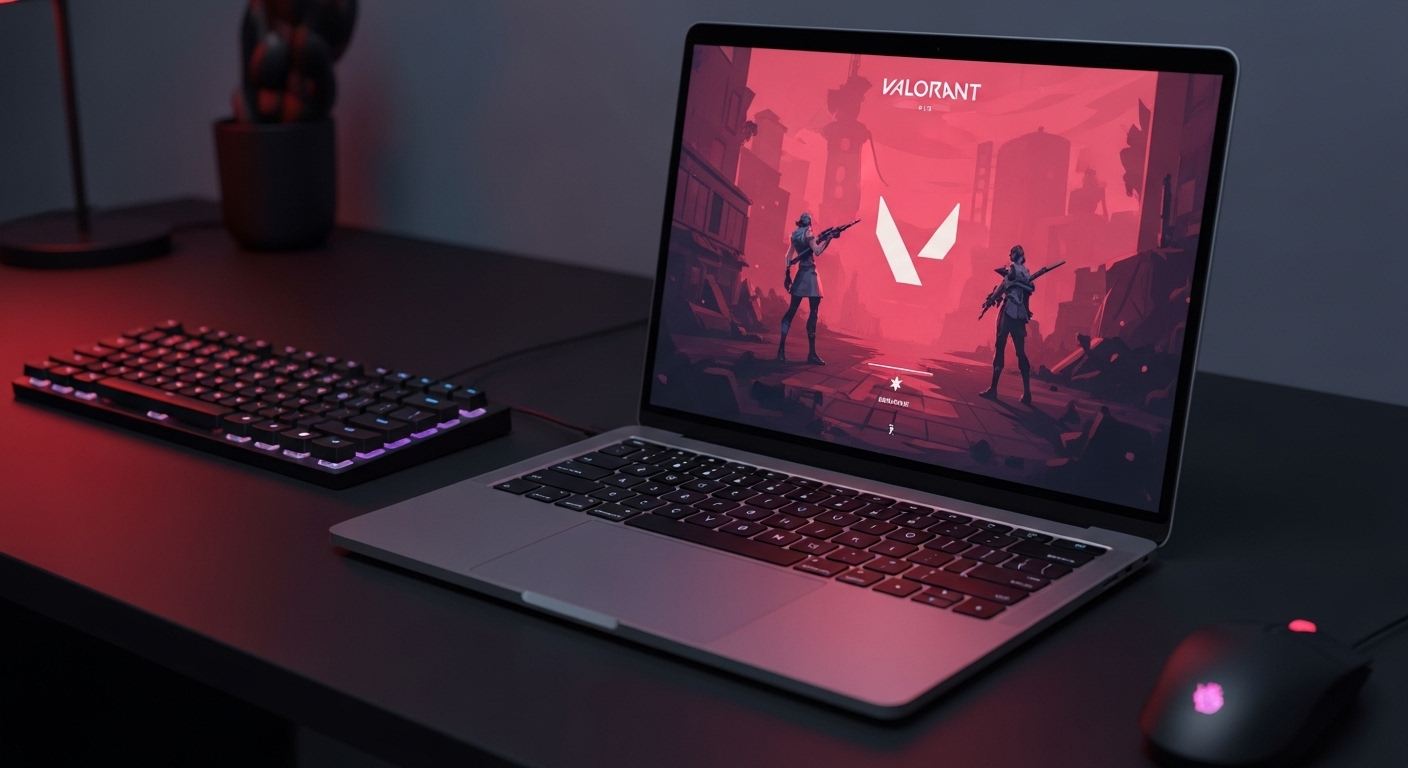
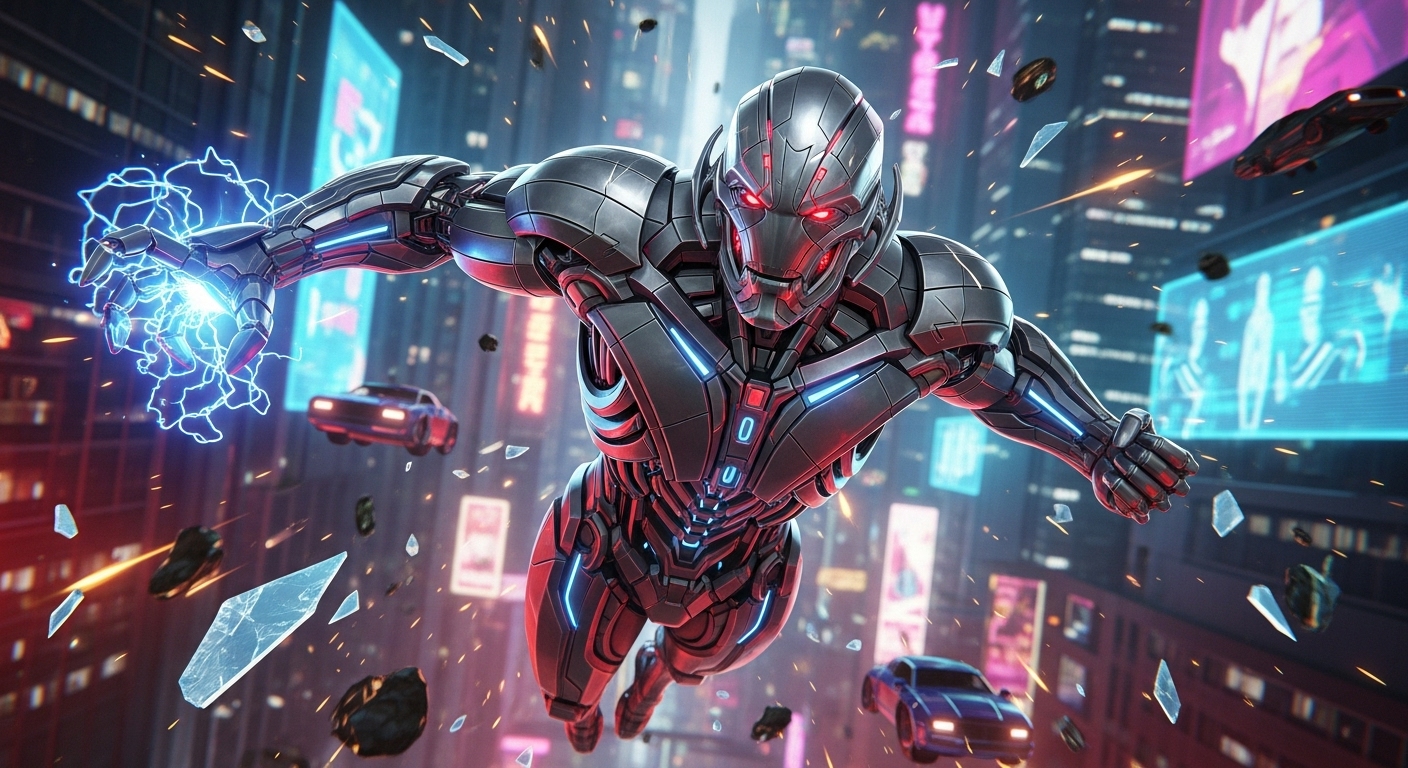
Love the focus on speed, chaos, and innovation in the 2025 esports tournaments. Exciting time for the industry!
The speed and chaos of 2025 esports tournaments bring a fresh vibe to the scene. Swiveling prize pools and quicker schedules add to the excitement.
Faster schedules and Swiss stages are changing the game – more action, less waiting. Esports is evolving!
Loving the faster schedules and sneaky roster shuffles in 2025 esports tournaments. The chaos is thrilling!
Esports tournament updates are thrilling, with faster schedules, bigger stakes, and creative formats for a wild ride!
Such exciting updates for the esports scene in 2025! Faster schedules, bigger stakes, can’t wait to see the chaos unfold.
This year’s esports scene is all about speed, chaos, and bigger stakes—can’t wait for what’s next!
The evolution of esports tournaments is exciting. Swiss stages and increased prize pools are game-changers!
What’s the wildest group stage match you’ve seen in 2025?